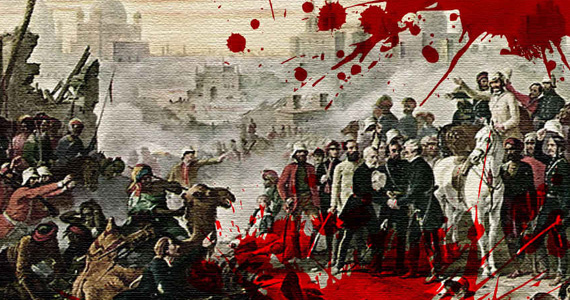Books and Publications
Publications
1) India’s Battles: A Series
USI-CAFHR is working to release a series of battlefield guides to be published by Harper-Collins India. The series, titled ‘India’s Battles: A Series’ will comprise initially of six books focusing on the following battles
- Kohima/Imphal 1944 by Mr Hemant Katoch
- Delhi 1857 by Sqn Ldr Rana Chhina
- Meerut 1857 by Dr Amit Pathak
- Lucknow 1857 by Dr Rosie Lewellyn Jones
- Kanpur 1857 by Mr Andrew Ward
- First Anglo Sikh War 1845-6 by Mr Amarpal Singh
The idea behind the project is to highlight not just the historical account of the battles but focus on battlefields and promote battlefield tourism to these historic theatres of war.
2) Alha Udal Ballad Rendition of Western Uttar Pradesh - A War Rendition of India.
The book is based on a military rendition of northern India called Alha and its relevance in understanding citizen soldiers of northern India.
Revolution of 1857 and Meerut
BY DR. K. D. SHARMA AND DR. AMIT PATHAK.
The book was released in 2002. It documented the sites on which events of the Great Uprising of 1857 occurred at Meerut. It was a bilingual book, both in English and Hindi, and was the first such publication ever to be released carrying original research linked to the events of the Uprising.
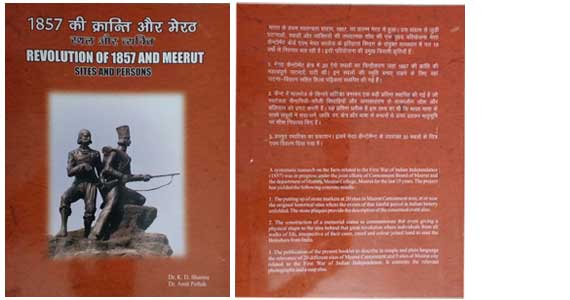
1857, A SAGE OF SACRIFICES
EDITED BY DR. S. K. MITTAL, DR. K.D. SHARMA AND DR. AMIT PATHAK.
Released at the first function organised by the Govt. of India to commemorate 150 years of the Great Uprising of 1857.
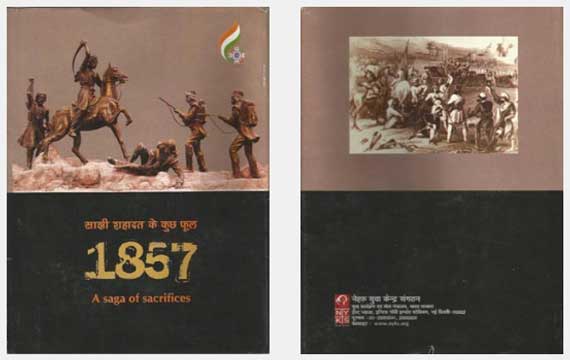
1857, ...LIVING HISTORY
- Title of the Book : 1857! Living History
- Author : Dr. Amit Pathak
- Published by : Government Museum, Jhansi.
- Financial assistance by : The Ministry of Culture, Government of India.
- Pages : 315
- About the book : The book has been divided into six sections –
Section 1
1857, Colonialism, Effects and Failure of Reactions.
This section deals with an understanding of the term `Colonialism’, the process which resulted in the rise of this idea in Europe in the past 800 years and its impact as well as continued legacy in the lands where colonialism became entranced.
This section also deals with the reasons and methods adapted by those who faced the consequences as well as oppression unleashed by colonialism to resist it, and the reasons for the success as well as defeat of these movements of resistance.
Section 2
Various aspects of Indian resistance to colonialism upto 1857.
There were many resistance movements against colonialism before 1857. They may have been limited in their geographical spread, but these movements mimic, in part or in whole, the events of 1857 as well as those which occurred after it. It is imperative that we understand these movements in detail, the thread that runs through them upto 1857, and how these movements are linked to even the present problems that India faces in this new millennium.
It has been noted but the author that the colonial forces in India evolved policies of crushing revolts within the Subcontinent through the experiences that they had in dealing with these early Indian resistance movements.
The author finds it interesting that the solutions for solving many of the problems that India faces in the present are woven within the tapestry of these early Indian resistance movements.
Section 3
Triggering of 1857
Most of the dissertations on the upsurge of 1857 deal with the aftermath of the events that occurred in Delhi on the 11th of May, 1857. Therefore, the author has tried to study the events that were occurring before this date and starts this section of the book from January 1857, ending the section on 11th May.
This section includes those lesser known attempts to take over Fort William which are lost in time, as are those revolutionaries who tried to ignite this movement in Bengal.
There is also a point by point analysis of events that centered around Mangal Pandey, which needed a thorough analysis.
The route taken by the sepoys of Meerut to reach Delhi on the night of 10th May has been analysed in a separate chapter.
Section 4
Understanding warfare of 1857
This section has been divided into 5 parts, these are also the major segments in which modern warfare is studied and analysed –
1) Army (in the book is included the whole history of Bengal Army).
2) Weapons (in this the history of the hand held long-guns, specially the muskets).
3) Tactics (transition of tactics with the introduction of Enfield rifle).
4) Combat Medicine (evolution of military medicine during this period).
5) Human Rights.
It is interesting to note that one of the biggest transition in all the above five segments under which warfare is analysed took place between 1850 and 1870 and had a huge bearing on the outcome of all the three major wars fought during this period – the Cremian War, War of Indian Independence 1857 and the American Civil War.
It is not an exaggeration to say that warfare in 1870 and beyond was completely different from warfare before 1850. The events of 1857 in India stand in the center of this transition, and the book analyses each of the above five aspects in detail.
Section 5
Living 1857 in 2007 – 2008
India celebrated the 150th anniversary of 1857 during this period. The author had the good fortune of being part of these celebrations, and also study the present day events with a background of 1857.
One conclusion that the author derived from all this analysis, that is included within the three chapters of this section – history never dies but lives through us, so does 1857, which is still alive in India in varied formats, and the causes that resulted in it, and the reasons for its failure are still very clearly perceptible in world affairs of our age.
Section 6
The Past and the Future
This section is a natural outcome of the analysis of section 5. It deals with the future. Should we become slaves of history and repeat it ad infinitum or should we rise above our experiences to carve out a bold new future – this is the question staring all of us in the face, and this needs strong bold answers as on the outcome of this question rests the future of the world.
Special Sections –
History of this Project
This chapter delineates the events which led to the writing of this book. In this chapter a summary of each section covered in the book has also been added and the reasons for writing that section have been enumerated.
This section says in the beginning that this book is the culmination of 7 years of study as well as projects undertaken. All those women and men who have contributed to this study as well as in the projects that were undertaken in Meerut and around have been acknowledged at the beginning of the book.
Collective Subconscious
This chapter has been added as a reply to those who are not very keen to understand the past but want to understand the present as well as predict the future.
This chapter analyses in detail the creation of the collective memory and thus the collective identity of a group of people. It starts with an analysis of Jung but continues much ahead to analyse every aspect of this interesting subject.
The basic premise on which this chapter is based is – the collective subconscious of two groups of people, when they meet, creates a series of experiences that transform the collective subconscious of both these groups, creating new patterns of human to human interaction which we understand as history.
This process was started at the moment the Homo sapiens was born and will continue on till they are living on this earth.
Terminology and points to be kept in consideration
The author has experienced that in English essays on the events of 1857, there is one basic deficiency. There is a big confusion on the use of terminology, as a lot of English terms as well as phrases used even by Indian writers are borrowed directly from English writings on this subject which were written during the colonial era. These writings, because of the times in which they were written, are extremely biased to say the least. The author strongly suggests the use of neutral terminology and for this many suggestions have been given in this section, as well as used throughout the book.
This section also deals with other aspects of terminology used in this book as well as the meanings of Hindustani words used in it.
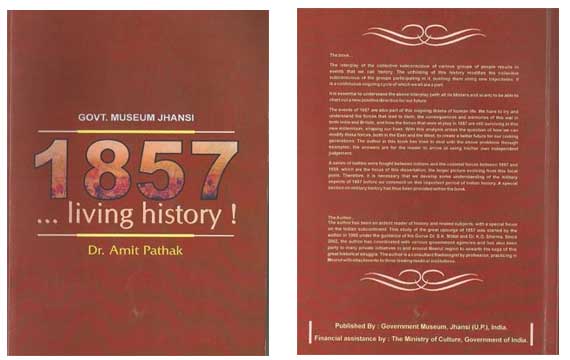
Aha Zindagi 10th May 2016
Article on our history work in Hindi national magazine ‘Aha Zindagi’ published on the special occasion of 159th anniversary of the Great Uprising of 1857. Wonderfully written by Mr Arun Lal.
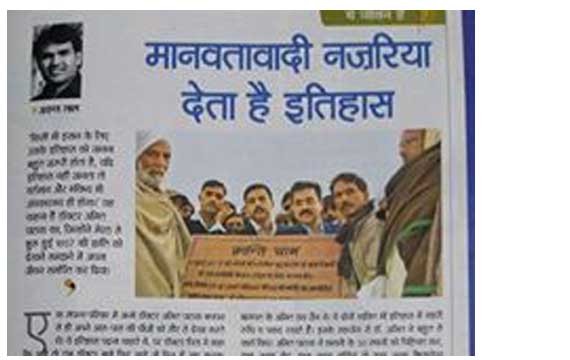
Separation, Anxiety
Article – Separation, anxiety
Publication – Week magazine
A wonderful article on Meerut in the 15th August special issue of The Week magazine, wonderfully covered by journalist Ms Mandira Nayar who personally met everyone to cover it … on a day when it was raining continuously and the roads were all closed because of the kawar yatra :). The complex issue of communalisation of society is covered through the voices of those who have seen and experienced it all first hand …. including historians.
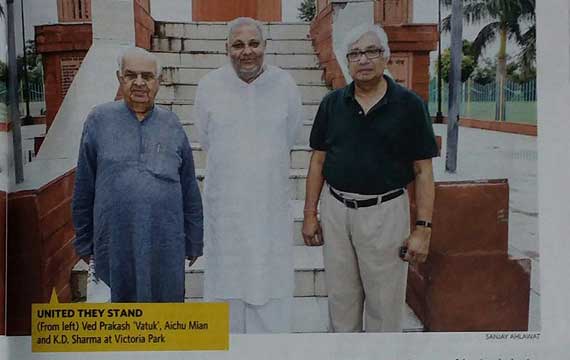
The Great Upsurge of 1857: Historical sites in Meerut Cantonment
Article – The Great Upsurge of 1857: Historical sites in Meerut Cantonment
Publication – National Defence Review
Old Cemetery on the Golf Course: Oldest existing monument of Meerut Cantt and was in use between the year of its establishment and 1810. In the 19th century it was known as the Portuguese Cemetery with a Greek grave having been reported existing in it in 1898 (which could not be identified in 1904). During the early 1800s, Europeans of many different nationalities, other then those of the British Isles, made Meerut their home. Read More

Meerut Cantonment and the War of Independence, 1857
Article – Meerut Cantonment and the War of Independence, 1857
Publication – Journal of the United Service Institution of India
The region of Meerut came under British rule in 1803 after the treaty of Surji – Anjungaon between the British and the Marathas. Thus began a new chapter in the history of Meerut which transformed this region forever through the establishment of one of the largest cantonments of the subcontinent. Read More
On the 160th Anniversary of the 1857 Uprising, Meet the Meerut Historian Keeping the Story Alive
Article – On the 160th Anniversary of the 1857 Uprising, Meet the Meerut Historian Keeping the Story Alive
Publication – The Wire Online Magazine
Meerut would have done a fine job of burying any evidence of the pivotal role it played in the first war of independence – were it not for the constant exertions of Amit Pathak, a historian from the city. Read More
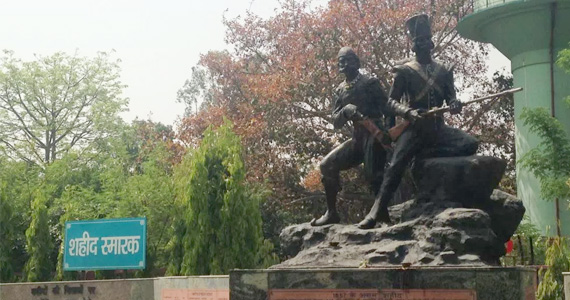
When the Dead Speak: Hidden Stories of 1857 From Ground Zero in Meerut
Article – When the Dead Speak: Hidden Stories of 1857 From Ground in Meerut
Publication – News 18
Meerut: The year was 1857 and it was past 5 pm at Meerut’s Sadar Bazaar. Just like any other day, British men were in the market to buy beer to beat the harsh Meerut heat. Very soon, a large group of Sepoys marched towards the Bazaar, and started beating the British with their bare hands. India’s first War of Independence had begun. “Many people don’t know that Baker’s Street was where the first War of Independence started,” said 76-year-old Atul Kumar, one of the oldest residents of the street in Sadar Bazaar whose family, he claims, has lived on this street for nine generations. Read More
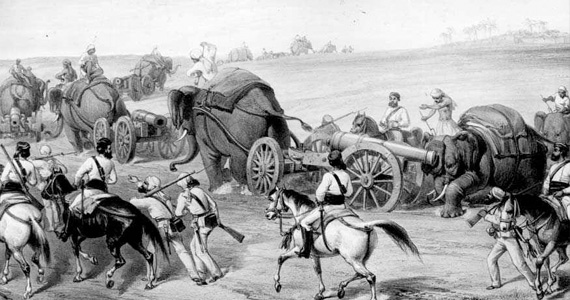
Breaking News: First Bulletin on 1857 Uprising Reached London a Month Later
Article – Breaking News: First Bulletin on 1857 Uprising Reached London a Month Later
Publication – News 18
New Delhi: For those shopping at Meerut’s Sadar Bazar, the evening of May 10, 1857, began like any other. Britons were milling around shops in the sweltering North Indian heat when a group of Sepoys (soldiers) swarmed the market. From there on, it was a bloodbath which went on to be recognized as the first revolt for independence. The anger of around 100 years of exploitation and humiliation under the ‘Company Raj’ had reached a tipping point on this day, 160 years ago. Read More
